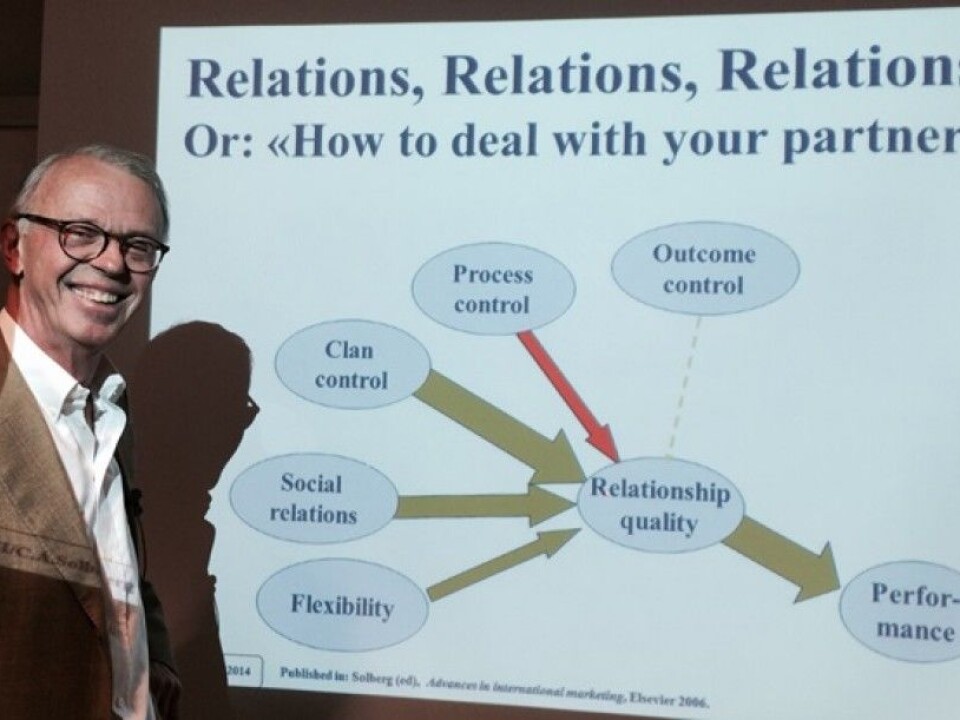
Norwegian exports get along without too much planning
Networks, market insights and persistent owners are much more important.
You company's sales can take off if you manage get a foothold in the market of another country. But what characterizes companies that succeed in selling a large share of their products or services abroad? Is detailed planning the key, or do you need the benefits of belonging to an industrial cluster? Researchers at BI Norwegian Business School have the answers.
“It would be stretching things to conclude that planning is vital for the companies we examined. Other studies have actually shown that chance explains more of an enterprise’s progress in international market than planning,” says Professor Carl Arthur Solberg, from the school.
Planning can be a straitjacket
In their recent study, the BI researchers evaluated the effect of various strategies for planning exports, such as the use of networks, market insights, positioning, industrial clusters and strategic planning. If you start in domestic or nearby markets, can certain markets catapult you into new ones abroad?
They found no real evidence that companies that plan expansions into other markets succeed any better in this quest than others. Thorough market analyses did not give much of a direct yield either, according to the study.

Planning improves a company’s profits. That’s considered a given. The planning process helps to structure and evaluate the facts and thus alerts management to the challenges and opportunities their company faces. One quality of a successful business leader has also been found to be that of a “good servant”.
But the checklists described in management literature and textbooks are not always expedient. They can also act as straitjackets that can keep a company from discerning between trivial and vital information, write Solberg and fellow authors Geir Gripsrud and Auke Hunneman in their report.
“Although planning has its advantages, it can also pose a problem,” says Solberg.
He says that the advantages of planning are that the activity creates structure, distributes resources and gets employees involved. But the disadvantage is that it requires accurate “weather forecasts”, which he thinks can quickly mire management in bureaucracy.
“Some companies lack the resources to analyse information about various conditions in international markets, so they make decisions based on the opportunities that arise. This does not necessarily give a leaner result,” says Solberg.
Chance can be underrated
Professor Solberg described the typical Norwegian entrepreneur as someone who makes certain snap decisions. Lots of companies go with gut feelings and perceptions in making decisions about exports and international expansion.
Many think this method of getting into exports is associated to high risks and demonstrates, to put it mildly, a lack of strategic awareness.
“We found no evidence indicating this was negative. Sometimes fortuity can lead to more headway than planning,” said Solberg.
“Internationalization often starts with an incidental occurrence involving potential customers/partners abroad. Such opportunities can stem from the lucky interplay of various incidents. But it can also be a result of the company’s involvement in a network which leads them to international markets,” says Solberg, and refers to earlier research on that subject.
Industrial clusters are not essential
Norway’s official trade representative abroad, Innovation Norway, is in favour of industrial clusters and recommends this type of cooperation. Innovation Norway allocates much of its support to clusters. But the researchers did not find that these clusters had any direct impact on the exports among their collaborating companies.
Proactive ownership is important
But he says ownership is an important impetus for succeeding in exports. Owners should preferably be proactive and persistent.
“Determination is important. A few, dedicated owners who have sufficient resources are one of the major factors for success,” said Solberg. “Perseverance is really important. You can’t expect to really do well until you have been at it for about five years. And you need resources to do that.”
He cited Helly-Hansen, a company that produces textiles and gear for outdoor use, as a prime example.
“Helly-Hansen has been under the control of a number of different owners. Some investors have been a catastrophe for the company, while later, Swedish owners, managed to make the brand world known. They have had the vision and the ability to implement their plans,” says Solberg.
Partners abroad are most significant
One of the most important objectives once a market has been targeted is to find a local representative in that country.
“Cultivating a relationship with a partner in the country you want to export to is decisive,” says Solberg. “Not just for initiating the trade, but also for being tipped off about where costs should be spread, including placement of some of the business operations in the country that will be doing the importing.”
From there a firm can ascertain whether it might be expedient to arrange for some of the production to be carried out within the import country.
Five major factors
The researchers found that differentiation is important. In other words, the products should be unique and stand out from those of competitors. Solberg summed up the findings of the report by pointing to five main factors which characterize successful enterprises.
“Network, market insight, positioning, cost control and ownership. These factors were the strongest indicators among companies that reported favourable outcomes with their exports,” he said.
------------
Read the Norwegian version of this article at forskning.no
Translated by: Glenn Ostling







